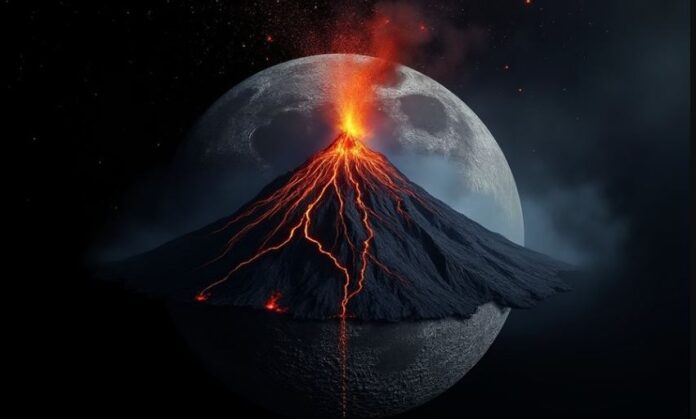A groundbreaking study by Chinese scientists has uncovered evidence of volcanic activity on the far side of the Moon, shedding light on its geological history. According to findings from soil samples brought back by China’s Chang’e-6 lunar mission, the Moon experienced prolonged volcanic activity lasting at least 1.4 billion years.
The soil, collected from the Chang’e-6 landing site, contained fragments of volcanic rock dating back as far as 4.2 billion years and as recent as 2.8 billion years ago. This discovery highlights a previously underestimated duration of volcanic activity on the lunar surface, particularly on its far side, which is less studied than the near side.
“The exact timing and duration of lunar volcanism remain elusive and may vary across different regions,” the researchers noted. They added that while large-scale volcanic activity on the Moon mostly ceased billions of years ago, there is evidence suggesting smaller volcanic events may have occurred more recently. Some near-side regions of the Moon may have experienced small-scale volcanic eruptions as recently as 120 million years ago, much later than previously thought.
The far side of the Moon, often referred to as the “dark side” due to its permanent positioning away from Earth, has long intrigued scientists. Unlike the near side, which has been extensively explored by past missions, the far side presents unique geological characteristics. The new findings from Chang’e-6 add a critical piece to the puzzle of the Moon’s evolutionary history, providing fresh insights into its internal heat sources and geological processes.
These revelations could also have implications for understanding the Moon’s potential resources. Volcanic activity often brings valuable minerals to the surface, and studying these ancient processes may help identify materials that could support future lunar missions or even human colonization efforts.
China’s lunar exploration program continues to push the boundaries of scientific discovery, with plans for further missions to investigate the Moon’s composition and potential habitability. As research progresses, the Moon’s volcanic history may offer a clearer picture of the solar system’s dynamic past.
Key Points:
- Volcanic Discovery:
Chinese scientists found evidence of volcanic activity on the Moon’s far side, based on soil samples returned by the Chang’e-6 mission. - Age of Volcanic Rocks:
The volcanic rock fragments date from 4.2 billion years ago to 2.8 billion years ago, indicating a long period of volcanic activity lasting at least 1.4 billion years. - Duration and Timing of Volcanism:
The exact timing of lunar volcanism varies across regions, with evidence suggesting some small-scale volcanic activity occurred as recently as 120 million years ago. - Chang’e-6 Mission:
The Chang’e-6 mission provided new insights from the Moon’s far side, which has been less studied than the near side. - Geological Implications:
The discovery offers new understanding of the Moon’s geological processes, internal heat sources, and the timing of its volcanic activity. - Potential Resources:
Volcanic activity may have brought valuable minerals to the surface, which could aid future lunar exploration and human colonization. - Future Lunar Missions:
China’s ongoing lunar exploration program aims to expand our knowledge of the Moon’s composition and potential for supporting future missions.



